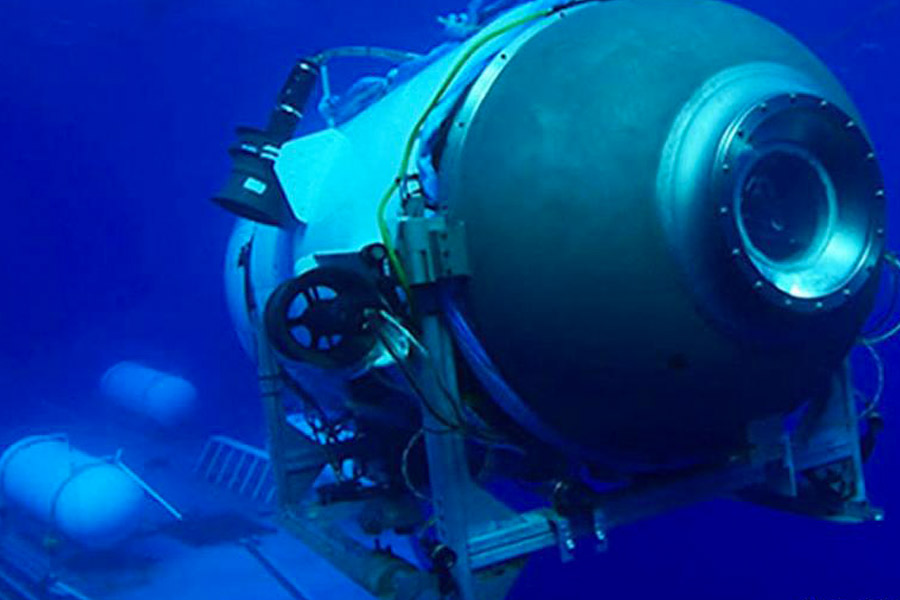The Coast Guard said on Wednesday it is bringing in more ships and underwater vessels to search for a submersible missing in the North Atlantic after detecting underwater sounds, including banging noises, that provided a glimmer of hope three days after the Titan disappeared while bringing five people down to the wreck of the Titanic.
The exact location and source of the sounds was not yet determined, but it allowed searchers to focus on a more narrowly defined area. The full scope of the search was twice the size of Connecticut and 4km deep, said Captain Jamie Frederick of the First Coast Guard District. “This is a search and rescue mission, 100 per cent,” Frederick said. “When you’re in the middle of a search and rescue case, you always have hope.”
But even those who expressed some optimism warned that many obstacles remain: from pinpointing the vessel’s location to reaching it with rescue equipment to bringing it to the surface — assuming it’s still intact — before the passengers’ oxygen supply runs out.
The area of the North Atlantic where the Titan submersible went missing on Sunday is prone to fog and stormy conditions, making it an extremely challenging environment to conduct a search-and-rescue mission, said Donald Murphy, an oceanographer who served as chief scientist of the Coast Guard’s International Ice Patrol.
After a Canadian military surveillance aircraft detected underwater noises in the search area, a robotic vessel was sent to scour the region but had so far “yielded negative results”, the Coast Guard wrote on Twitter.
The Coast Guard did not elaborate on what rescuers believed the noises could be. The vessel is estimated to have as little as a day’s worth of oxygen left if it is still functioning.
Three search vessels arrived on Wednesday morning, including one that has side-scanning sonar capabilities. The Coast Guard’s statement about detecting sounds underwater came after Rolling Stone reported that search teams heard “banging sounds in the area every 30 minutes”.
The report was encouraging to some experts because submarine crews unable to communicate with the surface are taught to bang on their submersible’s hull to be detected by sonar.
“It sends a message that you’re probably using military techniques to find me and this is how I’m saying it,” said Frank Owen, a submarine search and rescue expert. “So, that’s really encouraging if that’s the case.”
Richard Garriott de Cayeux, the president of The Explorers Club, wrote an open letter to his club’s adventurers, saying he had “much greater confidence” about the search after speaking to officials in Congress, the US military and the White House.
However, no official has publicly suggested they know the source of the underwater noises.
Meanwhile, questions remain about how teams could reach the lost submersible, which could be as deep as about 3,800 metres below the surface near the watery tomb of the historic ocean liner.
AP/PTI











